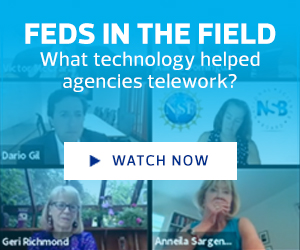GSA’s HR team has also used virtual tools to help new employees set up accounts, configure devices and take their oaths of office. More recently, they’ve started using real-time video to help new hires get to know their colleagues and the organizational mission through virtual Q&A events, information sessions, coffees and lunches, and a chat with the executive team.
“It’s been an intensive period, but we are actually on pace, if not doing a little bit better than during a normal year,” Krause says. “Some of the processes we leveraged were already in place, but the pandemic and the virtual work actually helped us to accelerate innovation and employment.
“Now, we’ve been able to leap ahead with our virtual processes and our technology to improve recruiting and hiring.”
DISCOVER: Which IT skills are most sought after in the federal government?
Agencies Move to Hire New Workers Amid the Pandemic
A major challenge for agencies was that the COVID-19 shutdowns not only forced agencies to hire online, but they also “needed to hire and onboard people in response to the pandemic,” according to Tim Rice, spokesperson for the Office of Personnel Management, which sets the federal government’s HR policies and standards.
“Fortunately,” he adds, “in accordance with the President’s Management Agenda, OPM had already instituted a variety of virtual hiring and onboarding processes that other federal agencies were able to leverage.”
USA Staffing, the government’s talent acquisition platform, had already set up an online onboarding capability for agencies’ immediate use; OPM granted permission to use virtual platforms to conduct legal tasks, such as administering oaths of office over video.
The Department of Homeland Security also provided a temporary exemption that allowed HR staff to remotely review identity and authorization documents for its Employee Eligibility Verification (Form I-9) requirements, necessary to prove that a potential employee can legally work in the U.S.
The Veterans Health Administration took advantage of some these newly established tools and policies. VHA hires tens of thousands of employees in a normal year, but had to surge a massive number of healthcare workers nationwide to combat the pandemic.
“We got the charge from our leadership that we needed to find a way to onboard people in three days once we selected them, and that really forced us to change our thinking and expand what we were willing to entertain,” says Jessica Bonjorni, the VHA’s chief of human capital management, who supervises more than 1,000 HR professionals.
EXPLORE: What can agencies do to appeal to prospective workers more than the corporate sector?
Collaboration Tools Accelerate the Hiring Process at VHA
VHA’s HR department began by modifying its VA Careers website to enable candidates to start the hiring process directly with VHA rather than go through the USAJobs site, the usual starting point for a federal job applicant.
Bonjorni’s team worked with the VHA IT department to set up a text-to-recruit application that allowed applicants to quickly start a chat session with a recruiter. Candidates could also upload their resumes to the website.
To cast a wide net for potential employees, the VHA used an events management platform called Brazen to conduct virtual recruiting fairs on a national level. The team also relied on a variety of interactive video tools, including Zoom, Adobe Connect and Cisco Webex, to conduct virtual interviews and virtual onboarding activities.










